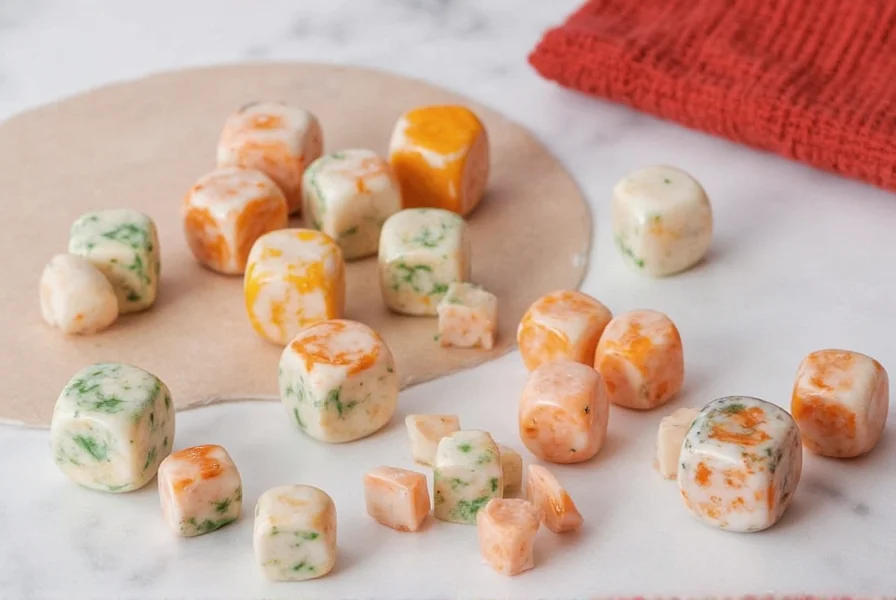Dicing ginger properly transforms this fibrous root into uniform pieces that distribute flavor evenly throughout your dishes. Whether you're preparing stir-fries, curries, or baked goods, mastering this fundamental kitchen technique ensures optimal texture and flavor release. Many home cooks struggle with ginger's irregular shape and fibrous texture, leading to inconsistent results that can make some bites overwhelmingly spicy while others lack flavor entirely.
Essential Tools for Dicing Ginger
Before learning how to dice ginger, gather these basic kitchen tools:
| Tool | Why It Matters | Alternative Options |
|---|---|---|
| Sharp chef's knife (6-8 inch) | Clean cuts through fibrous ginger without crushing | Paring knife for small quantities |
| Stable cutting board | Prevents slipping during precise cuts | Wood or bamboo preferred over plastic |
| Spoon or vegetable peeler | Gentle removal of thin skin without waste | Knife tip for small ginger pieces |
| Moist paper towel | Keeps board from slipping and absorbs moisture | Silicone mat with grip |
Step-by-Step Guide to Dicing Ginger Perfectly

1. Selecting and Preparing Your Ginger
Choose firm ginger roots with smooth, taut skin and no soft spots. Fresh ginger should feel heavy for its size and have a spicy, citrusy aroma. Refrigerated ginger becomes harder to cut, so allow it to reach room temperature before dicing. Wash thoroughly under cold water to remove any dirt from the crevices.
2. Peeling Ginger Without Waste
The traditional method of peeling ginger with a knife removes too much edible flesh. Instead, use the edge of a spoon to gently scrape away the thin skin. This technique follows the natural contours of the ginger, preserving maximum usable root. For smaller pieces, a vegetable peeler works well but requires more precision to avoid removing too much flesh.
3. Slicing Technique for Consistent Results
Place the peeled ginger on its side and slice crosswise into thin, even sheets about 1/8 inch thick. Keep your fingers curled safely away from the blade. For fibrous ginger varieties, cutting against the grain (perpendicular to the fiber direction) creates more tender pieces. Consistent thickness at this stage ensures uniform dicing in the final step.
4. Creating Perfect Ginger Cubes
Stack 3-4 slices together, then cut lengthwise into thin matchsticks (julienne). Gather these matchsticks into a small pile and carefully slice across them to create uniform cubes. For most recipes, 1/8 to 1/4 inch cubes work best. Larger cubes provide bursts of flavor, while smaller pieces distribute more evenly throughout dishes.
Pro Tips for Dicing Ginger Like a Professional
When learning how to cut ginger into small cubes, these professional techniques make a significant difference:
- Work in small batches - Process only a few inches of ginger at a time for better control and consistent sizing
- Keep your knife sharp - A dull blade crushes ginger fibers rather than cutting cleanly, releasing too much juice and altering texture
- Chill ginger slightly - If your ginger is particularly fibrous, refrigerate for 15-20 minutes before cutting for cleaner slices
- Use the side of your knife - After dicing, gather pieces with the flat side of your knife rather than the blade for safety
- Reserve ginger scraps - Save uneven pieces for making ginger tea or broth rather than discarding
Common Mistakes to Avoid When Dicing Ginger
Many home cooks make these errors when attempting to dice ginger properly:
- Using a serrated knife - Creates ragged cuts that release too much ginger juice and alters flavor distribution
- Cutting too large - Oversized pieces create uneven flavor pockets in dishes
- Peeling too deeply - Removing excessive flesh wastes valuable ginger and reduces yield
- Working with wet ginger - Moisture makes ginger slippery and dangerous to cut; pat dry before handling
- Ignoring fiber direction - Cutting with rather than against the grain creates stringy, unpleasant texture
Storing Diced Ginger Properly
Once you've mastered how to dice ginger, proper storage maintains freshness. Place diced ginger in an airtight container with a slightly damp paper towel to maintain moisture balance. Refrigerate for up to 1 week. For longer storage, freeze diced ginger in ice cube trays covered with water or oil, then transfer to freezer bags. Frozen ginger can be added directly to cooking without thawing.
Recipe-Specific Ginger Sizing Guide
The ideal size for diced ginger varies by application. Understanding these differences represents the proper technique for dicing ginger according to your culinary needs:
- Stir-fries and sautés - 1/8 inch cubes for even distribution and quick cooking
- Curries and braises - 1/4 inch cubes that hold shape during long cooking
- Baking and desserts - Finely minced (1/16 inch) for subtle flavor distribution
- Ginger tea or infusions - Larger chunks (1/2 inch) that can be easily removed
- Marinades - Medium dice (3/16 inch) that releases flavor without disappearing
Frequently Asked Questions
Can I dice ginger without peeling it first?
Yes, you can dice unpeeled ginger, especially if it's organic and thoroughly washed. The skin contains concentrated flavor compounds, but may create slightly tougher texture in delicate dishes. For most cooking applications, peeling improves texture without significantly affecting flavor.
What's the easiest method for dicing large quantities of ginger?
For large batches, use the food processor method: peel ginger, cut into 1-inch pieces, and pulse in short bursts until desired size is reached. Check frequently to prevent over-processing. This technique works well when perfect uniformity isn't critical, such as for ginger tea or broth.
Why does my diced ginger sometimes turn out stringy?
Stringy ginger results from cutting with the grain rather than against it. Ginger fibers run lengthwise through the root. To avoid stringiness, always slice crosswise (perpendicular to the fibers) before dicing. Older ginger tends to have more pronounced fibers, so use fresher roots when possible.
How fine should ginger be diced for curry?
For most curries, dice ginger to 1/8 to 1/4 inch cubes. This size provides balanced flavor distribution without disappearing during cooking. If you prefer a more subtle ginger presence, mince more finely. For Thai curries specifically, smaller dice (1/8 inch) works best as the flavor should complement rather than dominate.
Can I use pre-minced ginger from a jar instead of dicing fresh?
While convenient, jarred ginger lacks the bright, complex flavor of freshly diced ginger. The preservation process alters the chemical compounds, resulting in a one-dimensional taste. For best results in most recipes, especially those where ginger is a primary flavor, fresh is always preferable. Reserve jarred ginger for quick weeknight meals when time is limited.











 浙公网安备
33010002000092号
浙公网安备
33010002000092号 浙B2-20120091-4
浙B2-20120091-4